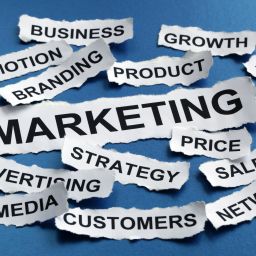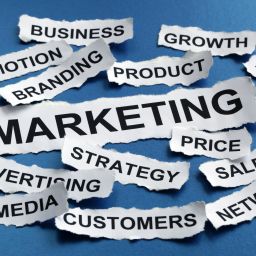
In our Getting Started with Email Marketing series, we’ll be covering how to measure the success of your campaign. Once you have planned and implemented an email strategy, your campaign is off and running. If all goes well, you are effectively engaging prospects, generating leads, and retaining consumers. Of course, simply starting an email campaign is not the end of your journey – the next step will be to analyze the success of your efforts and see what lessons you can take on to your next campaign.
Check out the rest of our Getting Started with Email Marketing Series here:
- Getting Started with Email Marketing: Benefits of Dynamic Email Campaigns
- Getting Started with Email Marketing: Planning Dynamic Email Campaigns
- Getting Started with Email Marketing: Measuring Email Campaigns
In the third edition of our Getting Started with Email Marketing series, we’re discussing implementing dynamic email campaigns.
It’s important to keep in mind that maximizing email marketing efforts doesn’t mean a dealership’s marketing strategies should suffer. Even on a tight budget, dealers can maximize exposure, cultivate a sterling reputation, develop a leading voice, and become a powerhouse in sales. In Part 3 of our Getting Started with Email Marketing series, we’re discussing how that success can be achieved when dealers implement dynamic email campaigns.
Previously, we discussed what it takes to initially plan an email campaign, including building your subscriber list, getting organized, and choosing your content. Once your plan is in place, you can begin the implementation phase. You will learn a lot as you gain personal experience, but the following tips for designing emails, setting subject lines, and previewing and testing your campaign should be a solid foundation for getting started:
Designing Emails: Many online resources offer great tips for email design, and we’ve collected a few fundamental recommendations here:
- Use high quality images and visuals: For the background, as well as within the email, utilize images that look professional, engage the reader, and keep the text easy to read.
- Make sure the email is responsive: Be sure the email can be read on all devices, keeping in mind that 67% of emails today are read on smartphones and tablets.
- Communicate a clear Call-To-Action: Specifically urge the customer to engage in the behavior you want (which is usually clicking on a link that takes them to a listing, landing page, or blogpost). It’s important to remember that people won’t typically look at your email for more than a minute. If you want users to see and click on the CTA, keep it “above the scroll” (above the point where users would have to scroll down to find it) and use engaging language – a prompt like “Join the Fun” is better than a simple “View Here”. And if you have more content, you can always use two CTAs – one closer to the top of the email and one near the bottom.
- Include links to your website and social media accounts: The more ways you connect with consumers, the closer they’ll feel to your brand, and the more likely they will be to become or remain customers. Giving consumers multiple ways to connect helps you build relationships.
Setting a Subject Line: You’ll need an engaging subject line to immediately grab a customer’s attention and convince them to open the email in the first place, and personalizing the subject line is the best way to accomplish that. If you can get a customer to open an email with an eye-catching and interesting subject line, you’re already beginning to develop that prospect into a lead. Here’s how to effectively optimize and personalize a subject line:
- Research your audience: Study the demographic you’re targeting with the email and figure out what topics and language would most align with their needs, interests, and styles. And remember that you are a guest in a crowded inbox – do what you need to do in order to stand out, but don’t be rude or offensive.
- Include recipients’ first names: Through your ESP, you can set each email that goes out in a campaign to feature the name of its individual recipient in the subject line. Emails that include a first name in the subject line have a higher click-through rate than those that do not – just be sure your subscriber list is updated with the correct names.
- Consider using emojis: If it fits your industry and your brand, consider placing emojis into the subject line. Research has found that 56% of brands that place an emoji in their emails have a higher open rate than those that do not.
- Establish accurate expectations: Use the subject line and pre-header text to let consumers know the value contained within the email, without overselling or misrepresenting the content. You want prospects to be excited to open your email, without being disappointed once they see it.
- Avoid rookie mistakes: In addition to avoiding hyperbole in your words, don’t trip into the pitfalls of using all caps, incorporating too many exclamation points, or over-explaining the email. You might think those things communicate passion, but really they make it seem like you are shouting. Subject lines should be more simple and cheerful than rambling and frantic.
- Pre-check your subject lines: There are a number of tools out there that will let you test how likely your subject line is to drive a conversion. We recommend this tool from Co-Schedule because it provides recommendations on how to improve and adjusts your score as you live-edit the subject line.
Previewing & Testing: You’ve designed your email and set a subject line, so now you’re good to hit “send,” right? Not so fast. Though you have put in considerable effort to assemble the email, is it as good as it could be? Are you certain everything is correctly spelled and formatted? Is one subject line or CTA better than another? To be fully confident in an email campaign, your last step of implementation is to preview and test the email.
- Double check CAN-SPAM rules: Take time at the end of the process to double- and triple-check that your email meets all federal requirements.
- Review for appearance and responsiveness: You’ll want to make sure that the email looks appealing, content can be read and understood, and the email can be viewed across devices and across email providers, like Gmail, Outlook, and others. To check emails, you can review both HTML and text formats.
- Click the links: The last thing you want to do is send out an email hoping to get prospects to visit your website, listings, or blog, only to find out the CTA link didn’t work. Avoid frustration and embarrassment by testing that all links effectively direct users to the targeted webpage.
- Utilize A/B testing: To really maximize your efforts, conduct a simple test at the beginning of the campaign. Make two versions of the email, with a single difference between them. This can be different subject lines, different headers, or different CTAs. Whatever the change, be sure that it is only one, single difference between the emails – if you change more than one thing, you won’t be able to figure out which difference affected the test results. Select two small groups of subscribers, sending one email to one group, and the second email to the other group, then compare open and click-through rates between the two groups. Whichever email performs better, that’s the email to send to the full, remaining subscriber list, as it should provide you with the most exposure and engagement. A quality ESP should offer A/B testing as a feature of their service.
Once you have designed your email, set a subject line, and previewed and tested the email, you’re ready to pull the trigger on your email campaign. If all goes well, you’ll begin effectively engaging prospects, generating leads, and retaining consumers. Of course, once an email campaign is implemented, you’re not quite done – the next step will be to monitor and measure your success, and learn important lessons for the next campaign – we’ll cover that topic next time.
And there you have it. When the marketing budget is tight, and the money just isn’t there for an expensive advertising campaign, crafting dynamic emails is a great way to successfully maximize exposure and grow sales. If you’re looking to understand how to measure the results of a dynamic email campaign, check out the next part of this series.
















